
John Hore (Grenell)

New Zealand's best known country singer and most prolific recording artist since Tex Morton, John Hore is a typical example of a country boy who rose from obscurity to overnight stardom, but unlike many of the country's pop idols, managed to maintain his status in the popularity stakes for many decades, and is still performing today.
Before John Hore arrived on the scene the appeal of country music was more or less restricted to a small but nonetheless enthusiastic band of followers. John helped to give it a much needed 'shot in the arm', making country music not only better known and appreciated, but more acceptable to a wider audience, dispelling the 'hillbilly' image for many.
John Denver Hore was born on July 19th, 1944, in the Central Otago town of Ranfurly, to Nellie and Herbert Hore. He grew up on the family farm at Kyeburn and developed a deep love of country life, especially for animals (with horses and dogs at the top of the list). When his father died in 1956 the family returned to Ranfurly. Two years later John moved to Dunedin to attend Otago Boys High School. He and his fellow pupils whiled away their leisure hours singing and playing their guitars. During the Christmas holidays John's sisters, Lorraine, Ainslie and Marilyn formed a vocal trio called the Three H's, with backing by brother John. They entered and came second in Joe Brown's 'Search For The Stars' Quest.
In 1960, the family settled in Port Chalmers, near Dunedin, and here John joined a folk group known as the Jasons. They won a number of local talent quests. John left school shortly after his eighteenth birthday and worked for a short time as roustabout with a shearing gang and as an employee of Glenrowan Station, Kyeburn, close to the old family farm. While working there he began to interest himself in country and western music and spent many a night singing in the bunkhouse or around the campfire to the enjoyment of the station hands. In January 1963 John took third prize in an open air talent quest organised by Joe Brown for the Centennial celebrations at Naseby in Central Otago. A month later he entered a talent contest again run by Joe Brown in Dunedin, and came first. Part of the prize was a tour with the 1963 Miss New Zealand Show. Later that year John won the Otago Provincial final of 'Have A Shot On TV', and was placed third in the national finals.
John's next milestone was signing with Joe Brown Records. His first release was "Mary Ann Regrets"/"Big Man In A Big House", followed by "Streets Of Laredo"/"Mr In-Between" in 1964. There were three other singles in 1964, all on the Joe Brown label, on which he continued until 1973, producing twenty four singles in total along the way.
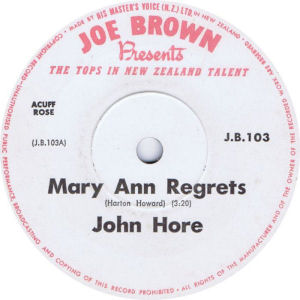
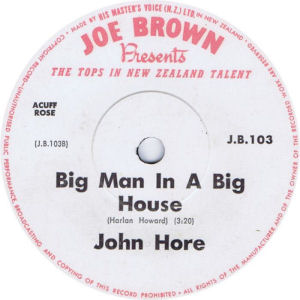
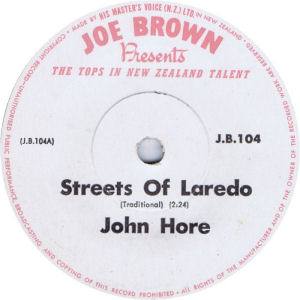
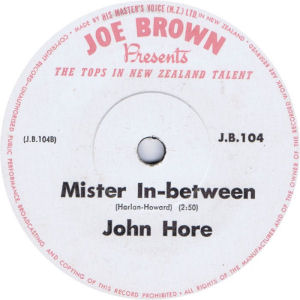
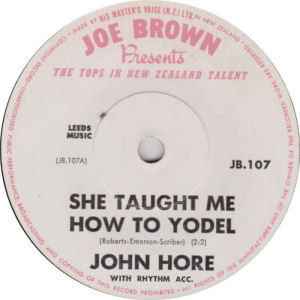
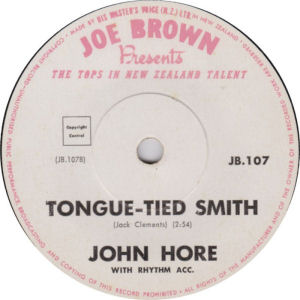
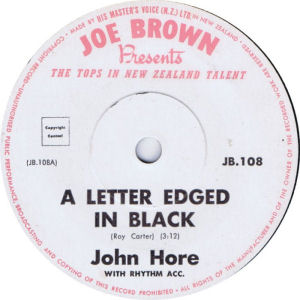
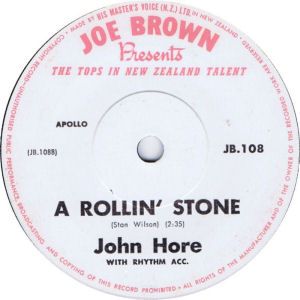
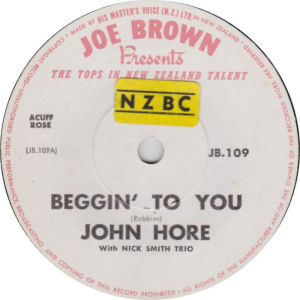
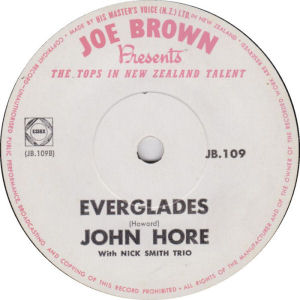
In December 1964 he released his first album, "Introducing John Hore". 1964 was a very busy year with important stage shows headed by such artists as Marty Robbins, Freddie Paris, Rob E G, Freddie Keil, Dinah Lee and Jim McNaught, as well as the Miss New Zealand Show. John continued to tour with that particular show annually while it existed.
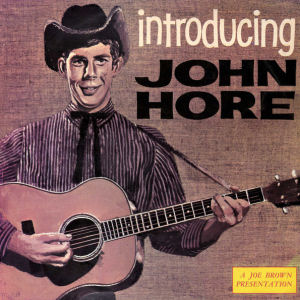
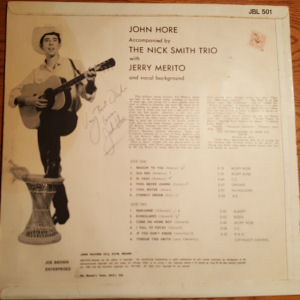
In August 1964 he went to Australia for a round of night clubs, hotels and TV appearances. While he was there, EMI released his single "Come On Home"/"Cool Water". Returning to New Zealand he toured with the Bobby Breen Show, and the following year with 'Showtime Spectacular' and his own Country and Western stage show. John's second album, "Encore John Hore", released in May 1965, topped all previous album sales by a New Zealand artist at that time. He was presented with a Silver Disc by Jim Healy, the popular compare of 'Country Style' from Radio Station 4ZA Invercargill, on behalf of the people of Southland for occupying the top 5 places on the Country and Western Top 10 chart. Another album released in 1965 was "My World".
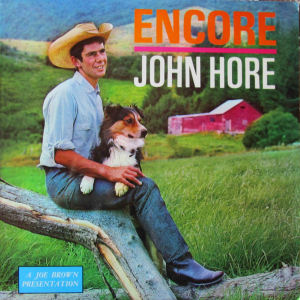
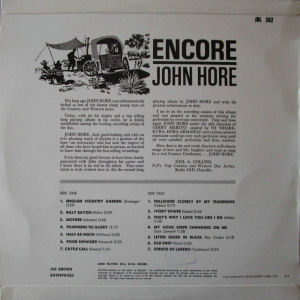
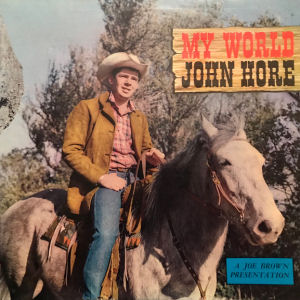
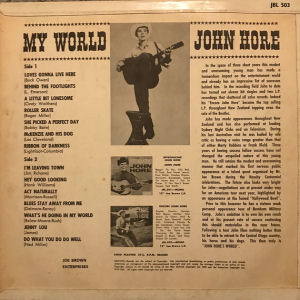
There were seven singles in 1965.
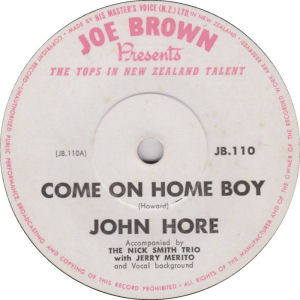
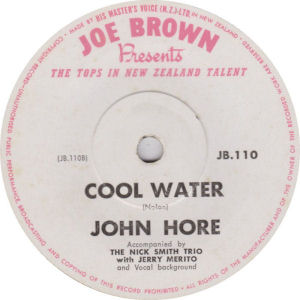
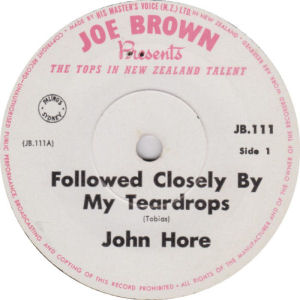
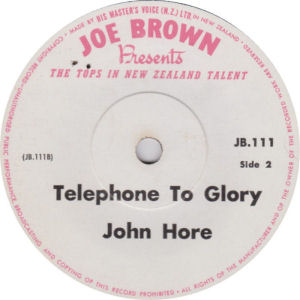
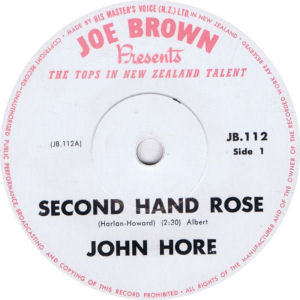

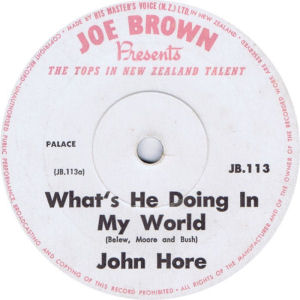
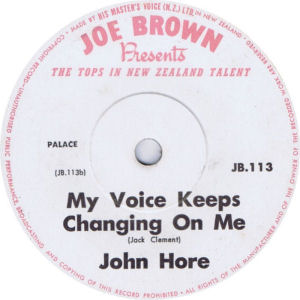
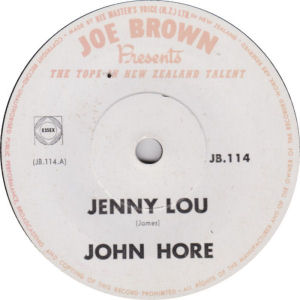
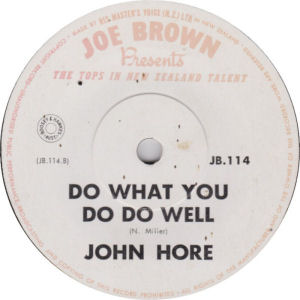
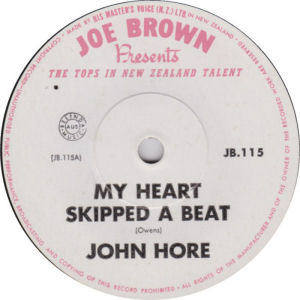
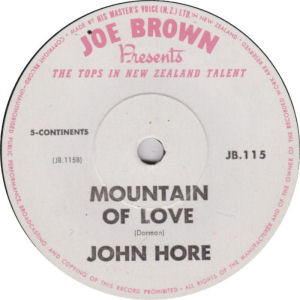
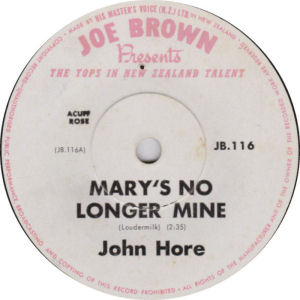
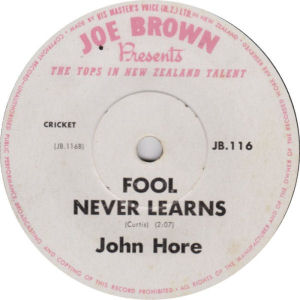
Two albums were released in 1966, "Country Gentleman" and "Hit The Trail". There was another visit to Australia and this was followed by a six month stint as Private John Hore in the New Zealand Army. On completion of his military service he went to the USA in October 1966 for a six month tour. He visited Nashville and appeared at many leading clubs and hotels, including the Palomino Country and Western Night Club, and a month at the celebrated Ice House in Pasadena. He also made a number of radio and television appearances and recorded an album in Hollywood called "The Town and Country Sound Of John Hore USA".
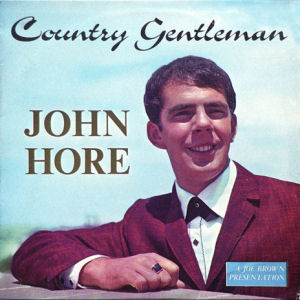
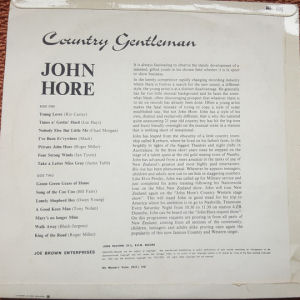
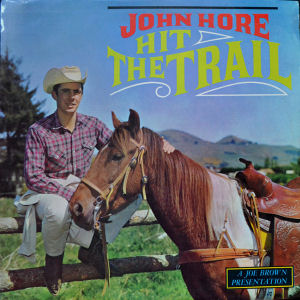
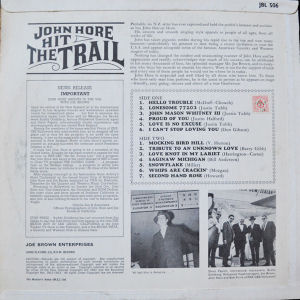

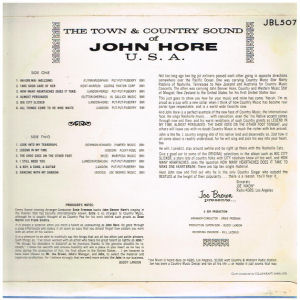
In 1966 there were five singles. There was an error on JB 122 so it was corrected and re-issued.
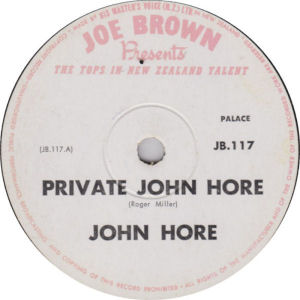

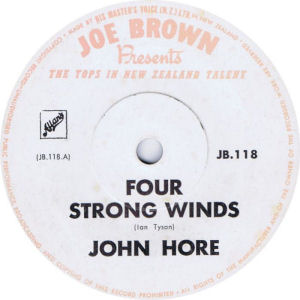
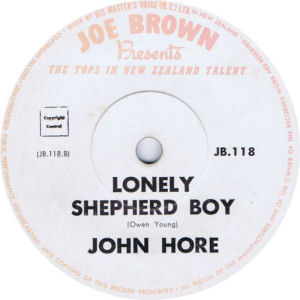

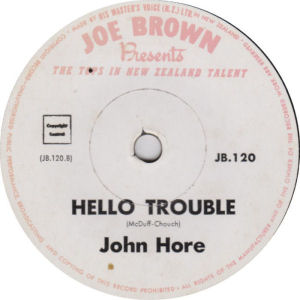
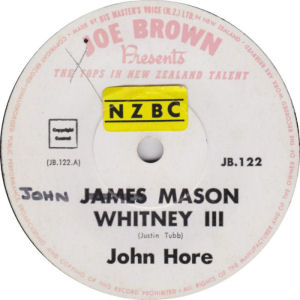
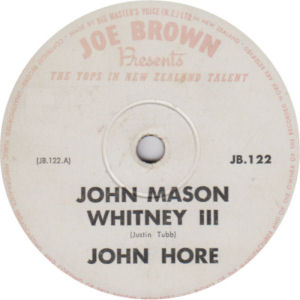
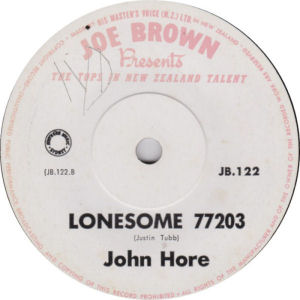
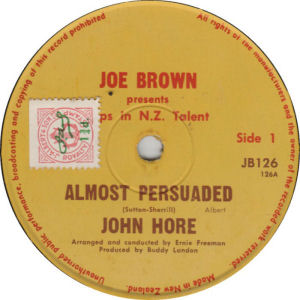

In 1967, John toured New Zealand again with the Joe Brown Country and Western Show, and then appeared as a guest of the Australian Modern Country Music Association at their 1967 convention in Brisbane. Two more albums were released during 1967, "My Kind Of Songs" and "Country Style".
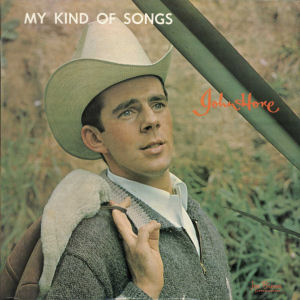
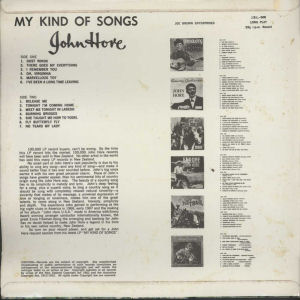
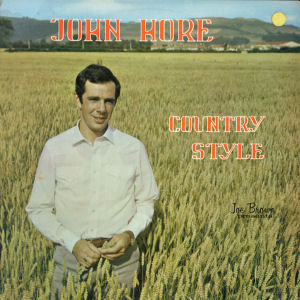
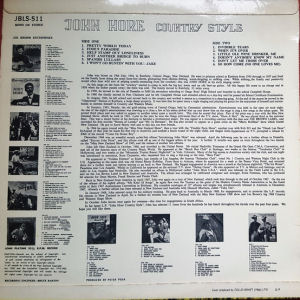
1967 saw three singles. On JB 127, John's name was omitted from the label. It was later corrected, with the A & B sides reversed.

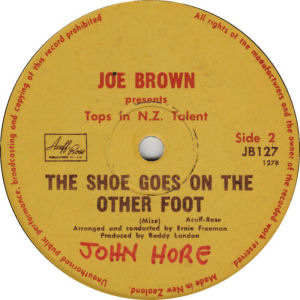

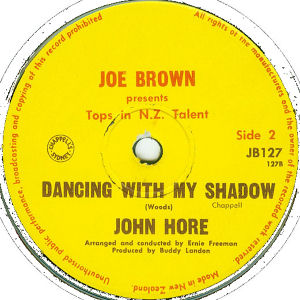

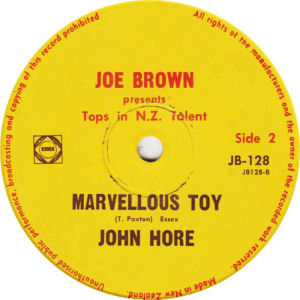
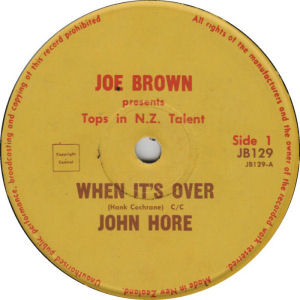
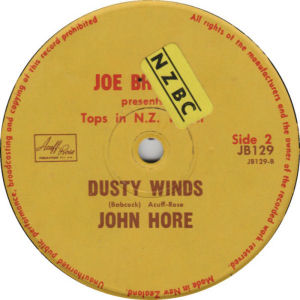
In October 1968, South Africa was his destination and a further series of successful engagements. The only album in 1968 was "New Zealand Songs". About this time John started restricting his public appearances and recorded output. He started to concentrate on a successful business enterprise in Queenstown, conducting trail rides for tourists.
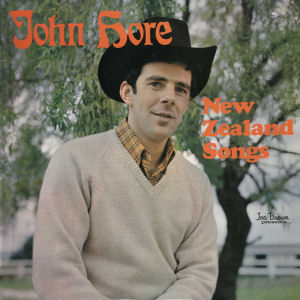

There were only two singles in 1968.
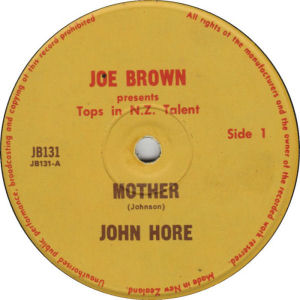
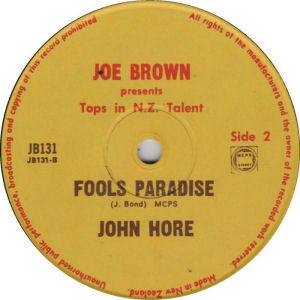

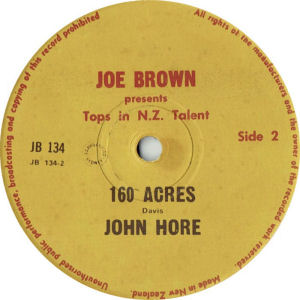
1969 his album release was "Great Country Hits" and in 1970 "Great Country Songs".
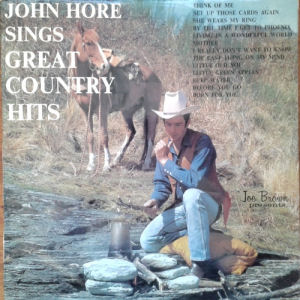
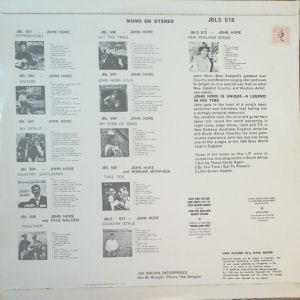
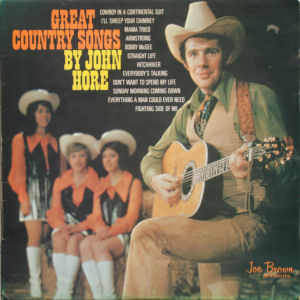
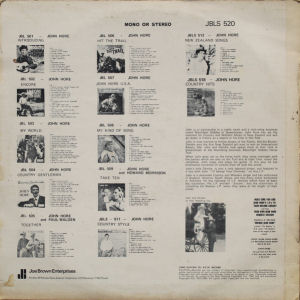
1969 saw a single with another Joe Brown recording artist, Leslie Mettam.

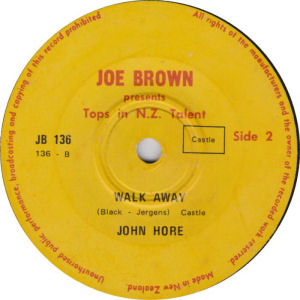
1972 saw "Travelin' Singin' Man" and a "Best Of Vol 2", I don't recall seeing a Volume 1 !!
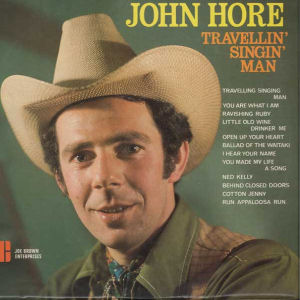
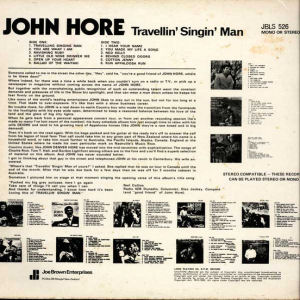
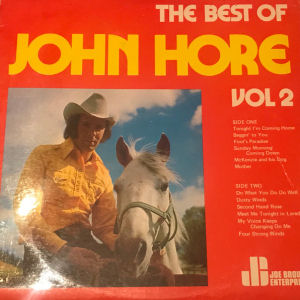
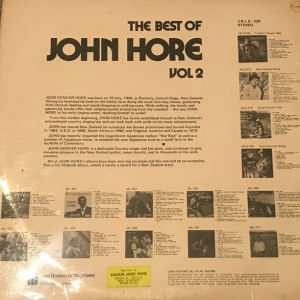
There was also one single in 1972.
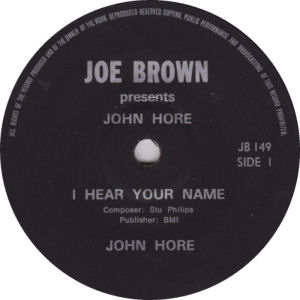
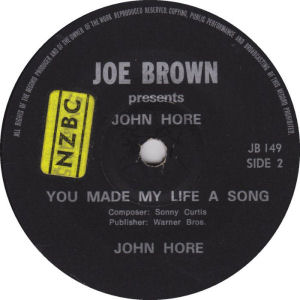
His last album for a while was in 1973, "The Mountains Of Home".
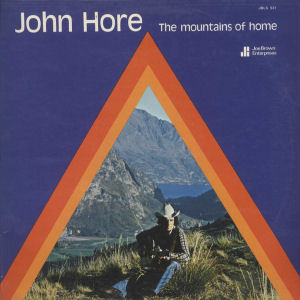
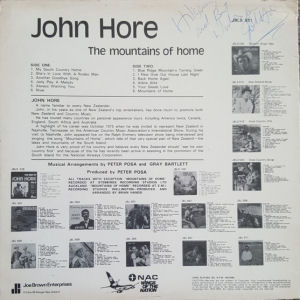
During the sixties and early seventies, John also recorded some albums in partnership with other artists. In 1966 he joined with Paul Walden, "Together", and in 1967, Howard Morrison "Take Ten". In 1972 an album with Eddie Low was called "We Should Be Together". There was also an EP with Eddie Low from 1967.
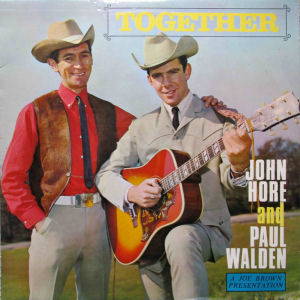
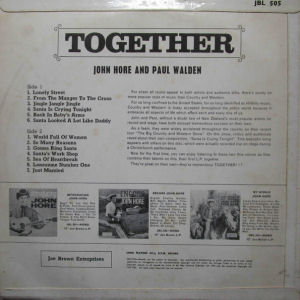
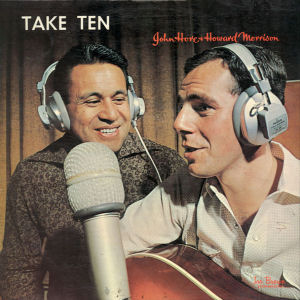

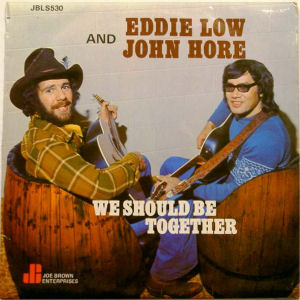
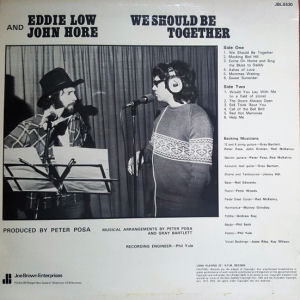
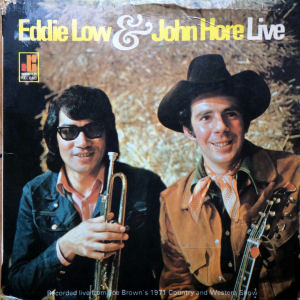
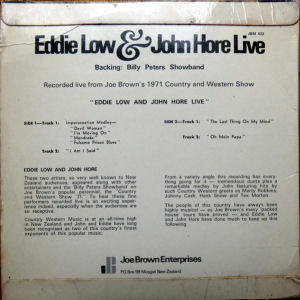
From the Paul Walden album came two singles.
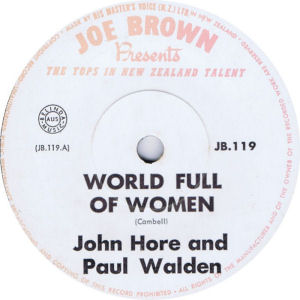
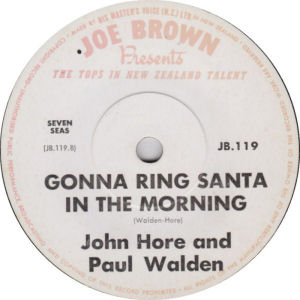
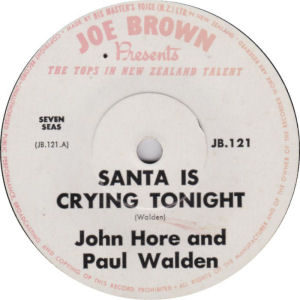
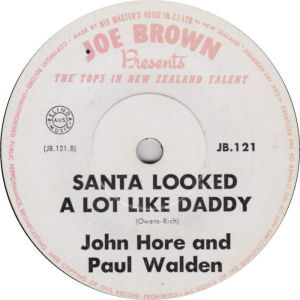
In 1988 John resurrected his career and started recording again. He decided to adopt a different name and recorded as John Grenell. Hore was his stepfather’s surname and he decided instead to use his original family name, Grenell.
He released an album called "Silver" in 1988 and another called ""Welcome To Our World" in 1990 and this led to a very successful touring show paying tribute to Jim Reeves.
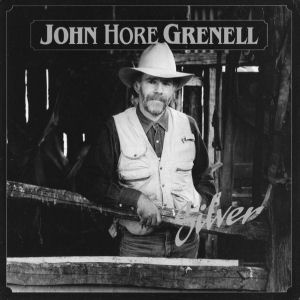
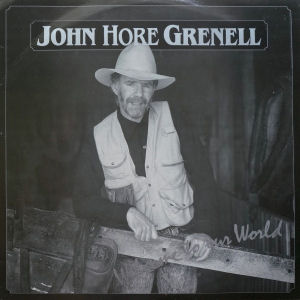
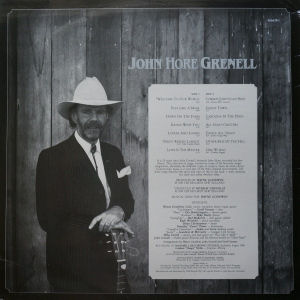
John Hore / Grenell can also be found on the following compilations:-